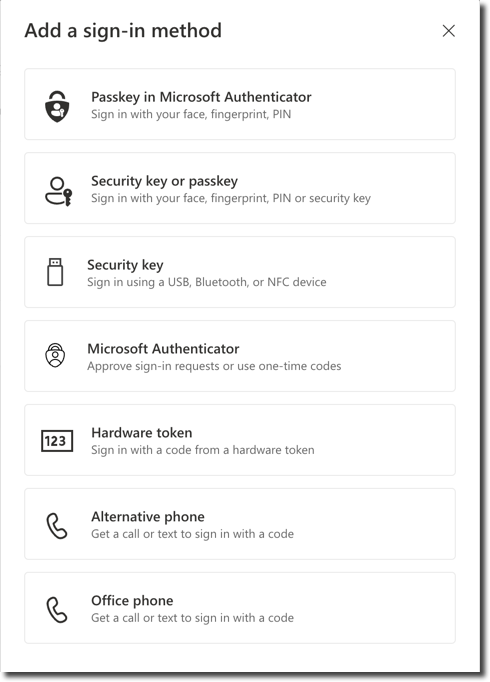Why do I have to do this?
Two important reasons that benefit you:
- You must use multi-factor authentication (MFA) to sign in to your University IT account. This is more secure than a password. It protects your personal information and the University’s systems and data.
- So you can use self-service password recovery if you forget your password. This is much quicker and easier than having to ask the UIS Service Desk to do it for you.
Important
- Your password must be at least 16 characters
- You must set up at least 2 sign-in methods (second factors for authentication). You need these for self-service password recovery and multi-factor authentication (MFA).
- Don’t rely on one device, for example, your mobile phone. If you lose that device, you won’t be able to sign in to your account or recover your password.
Setting up your security info
- Go to your My Sign-Ins page (opens in new window)
- Select "Security info"
- Select "Add sign-in method"
- Select a sign-in method and follow the on-screen prompts
What are my choices?
Passkey in Microsoft Authenticator (or another authentication app)
Set up your device or Microsoft Authenticator app to use your passkey so you can sign in with your fingerprint, face or PIN.
Note: You can use other authentication apps. Select "I want to use a different authenticator app" as you go through the set-up steps.
Security key (software) or passkey
Passkeys are a replacement for your password. You can sign in using your face, fingerprint, or PIN.
Important: Your biometric data stays on your device. It is never shared with Microsoft.
Security key (hardware)
A security key is a physical device that's used with a unique PIN to sign in.
Note: UIS Does not supply security key devices. There are many products on the market. You ‘ll need one that is FIDO2 compliant and compatible with Microsoft. For example, the YubiKey 5C NFC.
Microsoft Authenticator
We recommend using the Microsoft Authenticator app as one of your 2 sign-in methods. It generates a one-time passcode (OTP) for you. Install it on your mobile devices via the App Store (iOS) or Google Play (Android). If you have phone and a tablet, install it on both your devices in case you lose one. You can only install the app on mobile devices, not your laptop or desktop computer.
Can I use another authentication app?
Yes. If you’re already using another authentication app, you can select "I want to use a different authenticator app" as you go through the set-up steps.
Hardware token
If you don’t have a mobile phone, you can get a small device that generates a code for you. Ask your local IT staff about getting a hardware token.
Alternative phone or Office phone
Get a code sent to your mobile phone by SMS text message. You can get also get a voice call to any landline number (it doesn’t have to be your office phone).
Teams Phone users: You can use your Microsoft Teams Phone number, if you have one. To use the hash key (#) during set-up, select the Dialpad icon:
WhatsApp users: Messages get sent to WhatsApp when you’re online.
- How to get calls to your landline or mobile phone
- Getting verification codes sent to your mobile phone via text message or WhatsApp
What about my email apps?
You might need to update your email app settings after setting up your MFA sign-in methods.
Getting help
If you need help setting up or using your 2 sign-in methods, contact the UIS Service Desk or use the Live Chat.
Proof of identity
We need to make sure that you are the owner of the Microsoft account before we can help you set up your security info. We’ll ask for your:
- CRSid
- full email address
- date of birth
- College or department, and
- the year you joined the University.
We may then need to arrange a video call or WhatsApp chat. You'll need to show either your passport or photo driving licence as proof of identity.


